Study on In-Situ Synthesis Process of Ti–Al Intermetallic Compound-Reinforced Al Matrix Composites
Abstract
:1. Introduction
2. Experiment
3. Experimental Results and Analysis
3.1. Milling Time
3.2. Consolidation and Sintering Process
3.3. Hardness and Density
3.4. Compression Performance
4. Conclusions
- (1)
- A typical core–shell-like structure is produced in the Ti–Al intermetallic compound-reinforced Al matrix composites prepared by ball-milling and in-situ reaction. The outer layer of the shell structure is TiAl3, and the inner layer is Ti3Al; these species have good bonding strength and compatibility with the Al matrix and Ti core, respectively.
- (2)
- The shell is composed of a series of Ti–Al intermetallic compounds. In cold-pressing sintering, the shell thickness increases with increased milling time in ball-milling and holding time in sintering. In hot-pressing sintering, the combined action of pressure and temperature induces an in-situ reaction. The Ti–Al intermetallic compounds around the adjacent Ti cores extend and form a small connecting region.
- (3)
- The closed shell structure formed in cold-pressing sintering and the radiating cracks running through the shell structure in hot-pressing sintering are the major differences in the structure of the reinforcement. The radiating cracks that occur in hot-pressing sintering provide paths for further diffusion and enhance the Kirkendall effect, which results in more cavities and decreases the density degree.
- (4)
- From the results of this study, the holding time has a more significant effect on the hardness and ductility of the fabricated composites than the milling time.
Author Contributions
Funding
Conflicts of Interest
References
- Miracle, D.B. Metal matrix composites—From science to technological significance. Compos. Sci. Technol. 2005, 65, 2526–2540. [Google Scholar] [CrossRef]
- Clynely, T.W.; Wthersi, P.J. An Introduction to Metal Matrix Composite; Cambridge University Press: Cambridge, UK, 1993. [Google Scholar]
- Hooker, J.A.; Doorbar, P.J. Metal matrix composites for aeroengine. Mater. Sci. Technol. 2000, 16, 725–731. [Google Scholar] [CrossRef]
- Mousavian, R.T.; Khosroshah, R.A.; Yazdani, S.; Brabazon, D.; Boostani, A.F. Fabrication of aluminum matrix composites reinforced with nano- to micrometer-sized SiC particles. Mater. Des. 2016, 89, 58–70. [Google Scholar] [CrossRef] [Green Version]
- Gain, A.K.; Zhang, L. Microstructure, mechanical and electrical performances of zirconia nanoparticles-doped tin-silver-copper solder alloys. J. Mater. Sci. Mater. Electron. 2016, 27, 7524–7533. [Google Scholar] [CrossRef]
- Gain, A.K.; Zhang, L.; Quadir, M.Z. Composites matching the properties of human cortical bones: The design of porous titanium-zirconia (Ti-ZrO2) nanocomposites using polymethyl methacrylate powders. Mater. Sci. Eng. A 2016, 662, 258–267. [Google Scholar] [CrossRef]
- Zhao, K.; Tang, D.; Liu, J.; Wang, Y. Structural evolution during mechanical milling of bimodal-sized Al2O3 particles reinforced aluminum matrix composite. Acta Metall. Sin. 2018, 31, 423–430. [Google Scholar] [CrossRef]
- Lin, K.; Wang, W.; Jiang, R.; Xiong, Y.; Song, G. Grindability and surface integrity of in situ TiB2, particle reinforced aluminum matrix composites. Int. J. Adv. Manuf. Technol. 2017, 88, 1–12. [Google Scholar] [CrossRef]
- Mehmet, I.; Amin, N.; Onder, A.; Sabri, A. Mechanical characterization of B4C reinforced aluminum matrix composites produced by squeeze casting. J. Mater. Res. 2017, 32, 599–605. [Google Scholar]
- Popov, V.A.; Shelekhov, E.V.; Prosviryakov, A.S.; Presniakov, M.Y.; Senatulin, B.R.; Kotov, A.D.; Khomutov, M.G. Particulate metal matrix composites development on the basis of in situ, synthesis of TiC reinforcing nanoparticles during mechanical alloying. J. Alloys Compd. 2017, 707, 365–370. [Google Scholar] [CrossRef]
- Abbasi Chianeh, V.; Madaah Hosseini, H.R.; Nofar, M. Micro structural features and mechanical properties of Al-Al3Ti composite fabricated by in-situ powder metallurgy route. J. Alloys Compd. 2009, 473, 127–132. [Google Scholar] [CrossRef]
- Munoz-Morris, M.A.; Rexach, J.I.; Lieblich, M. Comparative study of Al-TiAl composites with different intermetallic volume fractions and particle sizes. Intermetallics 2005, 13, 141–149. [Google Scholar] [CrossRef] [Green Version]
- Albiter, A.; Contreras, A.; Bedolla, E.; Perez, R. Structural and chemical characterization of precipitates in Al-2024/TiC composites. Compos. Part A 2003, 34, 17–24. [Google Scholar] [CrossRef]
- Han, J.K.; Li, X.; Dippenaar, R.; Liss, K.D.; Kawasaki, M. Microscopic plastic response in a bulk nano-structured TiAl intermetallic compound processed by high-pressure torsion. Mater. Sci. Eng. A 2018, 714, 84–92. [Google Scholar] [CrossRef]
- Pettit, F.S. Oxidation mechanisms for nickel-aluminum alloys at temperatures between 900 °C and 1300 °C. Trans. Metall. Soc. AIME 1967, 239, 1296–1305. [Google Scholar]
- Varin, R.A. Intermetallic reinforced light metal matrix in-situ composites. Metall. Mater. Trans. A 2002, 33, 193–201. [Google Scholar] [CrossRef]
- Lloyd, D.J. Particle reinforced aluminium and magnesium matrix composites. Int. Mater. Rev. 1994, 39, 1–23. [Google Scholar] [CrossRef]
- Deuis, R.L.; Subramanian, C.; Yellup, J.M. Dry sliding wear of aluminium composites—A review. Compos. Sci. Technol. 1997, 24, 415–435. [Google Scholar] [CrossRef]
- Nath, H. A review on in situ synthesis of Al/TiC and Al/SiC composites. Key Eng. Mater. 2016, 684, 287–292. [Google Scholar] [CrossRef]
- Zhao, G.; Huang, C.; Liu, H.; Zou, B.; Zhu, H.; Wang, J. A study on in-situ synthesis of TiB2-SiC ceramic composites by reactive hot pressing. Ceram. Int. 2014, 40, 2305–2313. [Google Scholar] [CrossRef]
- Mostaan, H.; Karimzadeh, F.; Abbasi, M.H. Investigation of in-situ synthesis of NbAl3/Al2O3 nanocomposite by mechanical alloying and its formation mechanism. J. Alloys Compd. 2010, 503, 294–298. [Google Scholar] [CrossRef]
- Du, X.; Gao, T.; Qian, Z.; Wu, Y.; Liu, X. The in-situ synthesis and strengthening mechanism of the multi-scale SiC particles in Al-Si-C alloys. J. Alloys Compd. 2018, 750, 935–944. [Google Scholar] [CrossRef]
- Liu, K.; Li, Y.; Wang, J. In-situ reactive fabrication and effect of phosphorus on microstructure evolution of Ni/Ni-Al intermetallic composite coating by laser cladding. Mater. Des. 2016, 105, 171–178. [Google Scholar] [CrossRef]
- Beyhaghi, M.; Khaki, J.V.; Manawan, M.; Kiani-Rashid, A.; Kashefi, M.; Jonsson, S. In-situ synthesis and characterization of nano-structured NiAl-Al2O3 composite during high energy ball milling. Powder Technol. 2018, 329, 95–106. [Google Scholar] [CrossRef]
- Xue, Y.; Ni, S.; Song, M.; Xiao, D. Effect of sintering temperature on mechanical properties of an Al3Ni intermetallic compound reinforced Al matrix composite. Mater. Sci. Eng. Powder Metall. 2014, 19, 917–920. [Google Scholar]
- Maiti, R.; Chakraborty, M. Synthesis and characterization of molybdenum aluminide nanoparticles reinforced aluminium matrix composites. J. Alloys Compd. 2008, 458, 450–456. [Google Scholar] [CrossRef]
- Liu, C.Y.; Jing, R.; Wang, Q.; Zhang, B.; Jia, Y.Z.; Ma, M.Z.; Liu, R.P. Fabrication of Al/Al3Mg2 composite by vacuum annealing and accumulative roll-bonding process. Mater. Sci. Eng. A 2012, 558, 510–516. [Google Scholar] [CrossRef]
- Swiderska-Sroda, A.; Kurzydlowski, K.J.; Wyrzykowski, J.; Varin, R.A. Processing, microstructure and mechanical properties of in situ Al3Ti-matrix/Al composites. Process. Fabric. Adv. Mater. 2001, 1, 269–286. [Google Scholar]
- Dursun, Ö.; Tansel, T.; Hatice, E.; Ibrahim, C. Synthesis, characterization and dry sliding wear behavior of in-situ formed TiAl3 precipitate reinforced A356 alloy produced by mechanical alloying method. Mater. Res. 2015, 18, 813–820. [Google Scholar] [CrossRef]
- Vencl, A.; Rac, A.; Bobic, I. Tribological behavior of Al-based MMCs and their application in automotive industry. Tribol. Ind. 2004, 26, 31–38. [Google Scholar]
- Zhang, H.; Xu, C.; Xiao, W.; Ameyama, K.; Ma, C. Enhanced mechanical properties of Al5083 alloy with graphene nanoplates prepared by ball milling and hot extrusion. Mater. Sci. Eng. A 2016, 658, 8–15. [Google Scholar] [CrossRef]
- Yang, X.; Chen, Y.; Zhao, C.N. Effect of ball-milling process on the microstructure and mechanical properties of in-situ synthesized carbon nanotube reinforced aluminum composites. J. Mater. Eng. 2017, 45, 93–100. [Google Scholar]
- He, Y.; Jiang, Y.; Xu, N.; Zou, J. Fabrication of Ti-Al Micro/Nanometer-sized Porous Alloys through the Kirkendall Effect. Adv. Mater. 2007, 19, 2102–2106. [Google Scholar] [CrossRef]
- Novoselova, T.; Celotto, S.; Morgan, R.; Fox, P.; O’neill, W. Formation of TiAl intermetallics by heat treatment of cold-sprayed precursor deposits. J. Alloys Compd. 2007, 436, 69–77. [Google Scholar] [CrossRef]
- Rezaei, A.; Madaah Hosseini, H.R. Evolution of microstructure and mechanical properties of Al-5wt% Ti composite fabricated by P/M and hot extrusion: Effect of heat treatment. Mater. Sci. Eng. A 2017, 689, 166–175. [Google Scholar] [CrossRef]
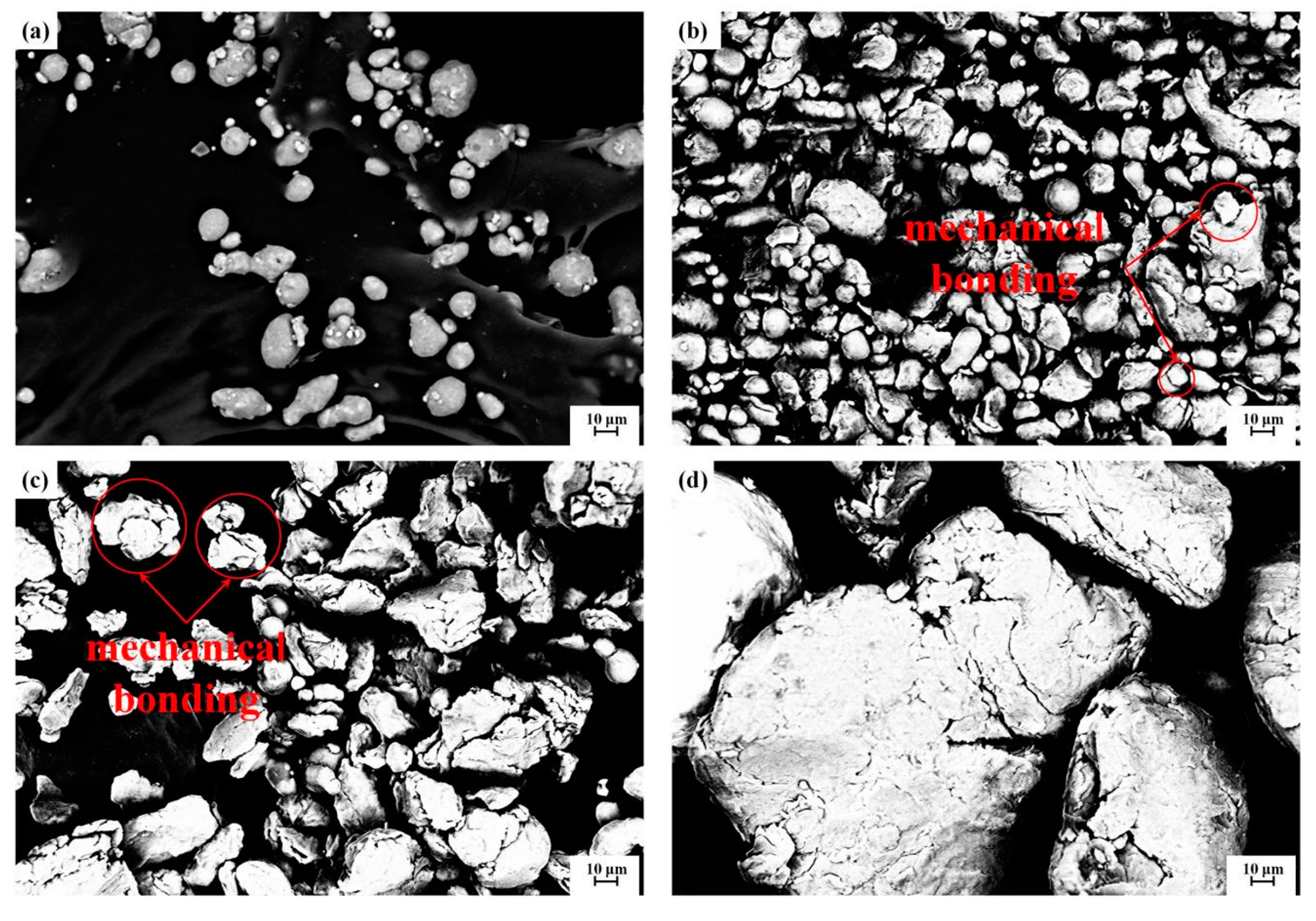
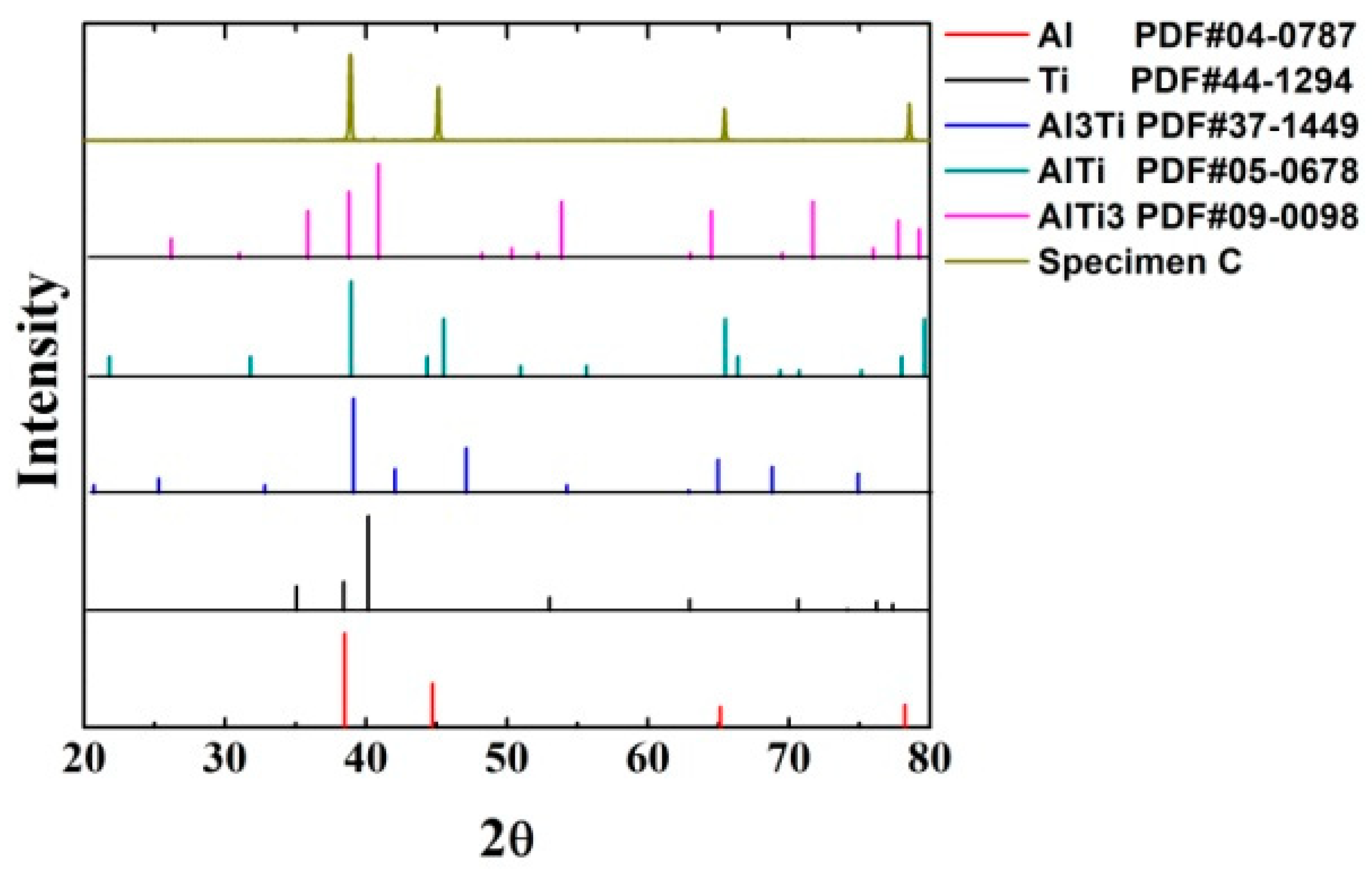
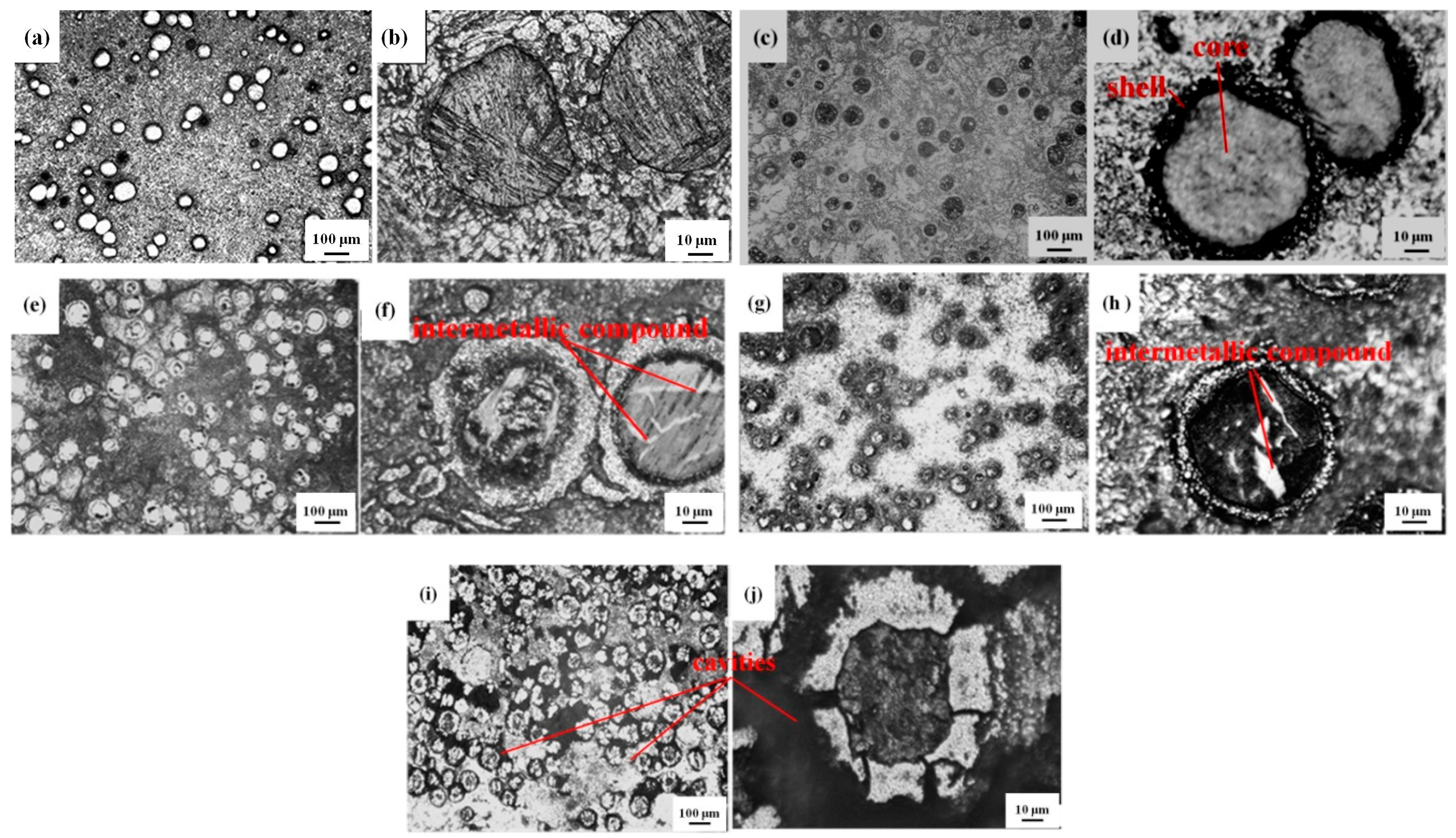
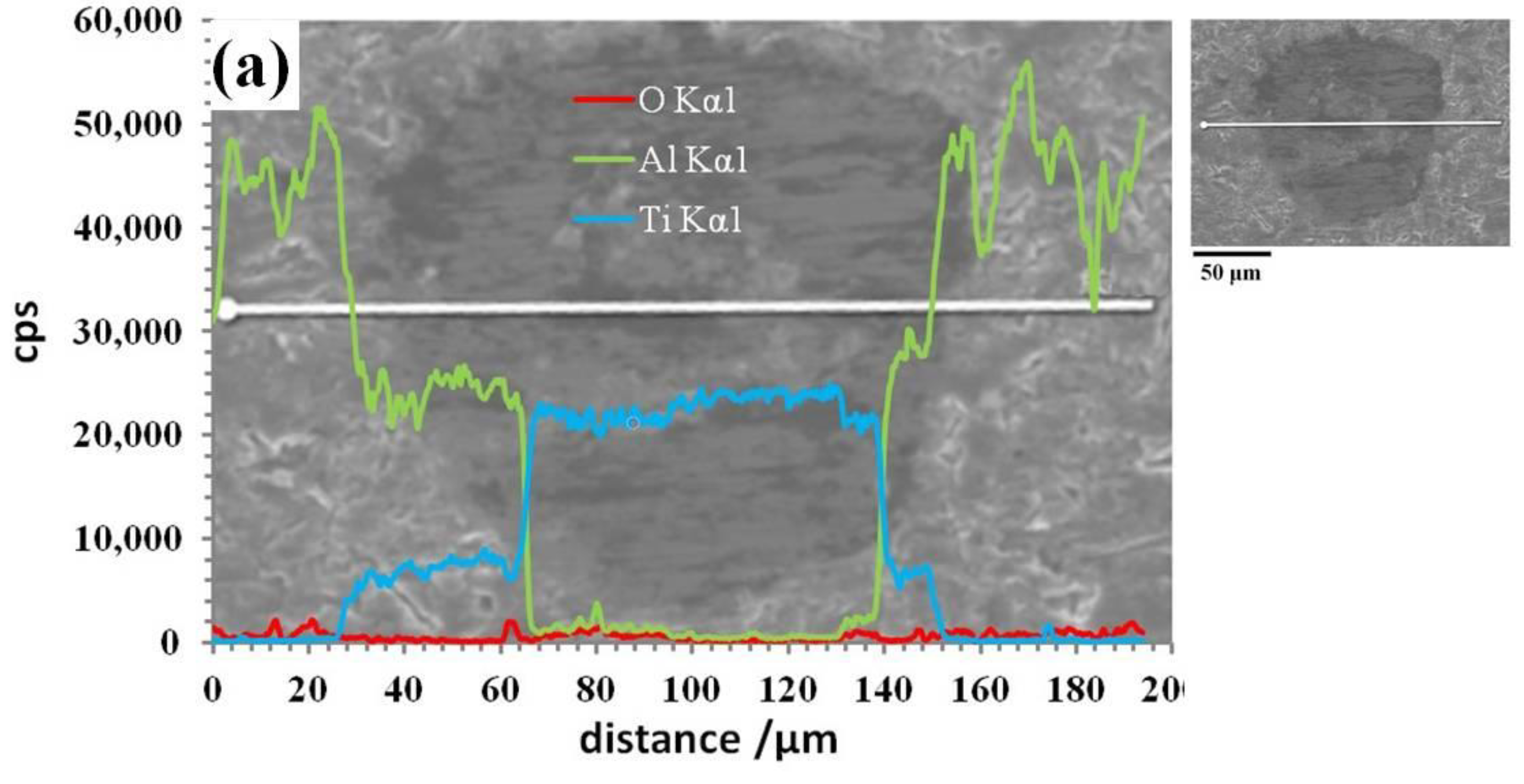
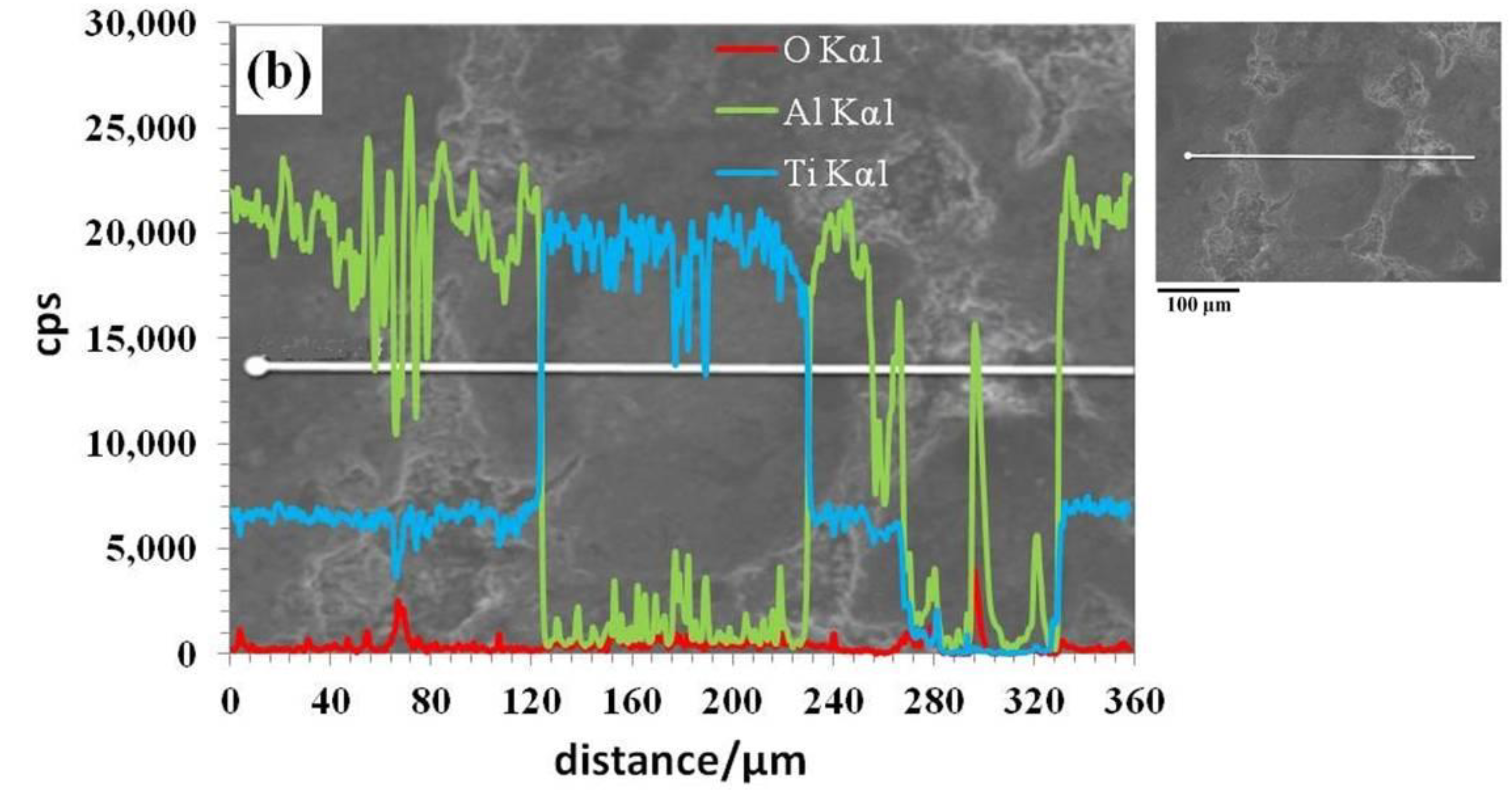
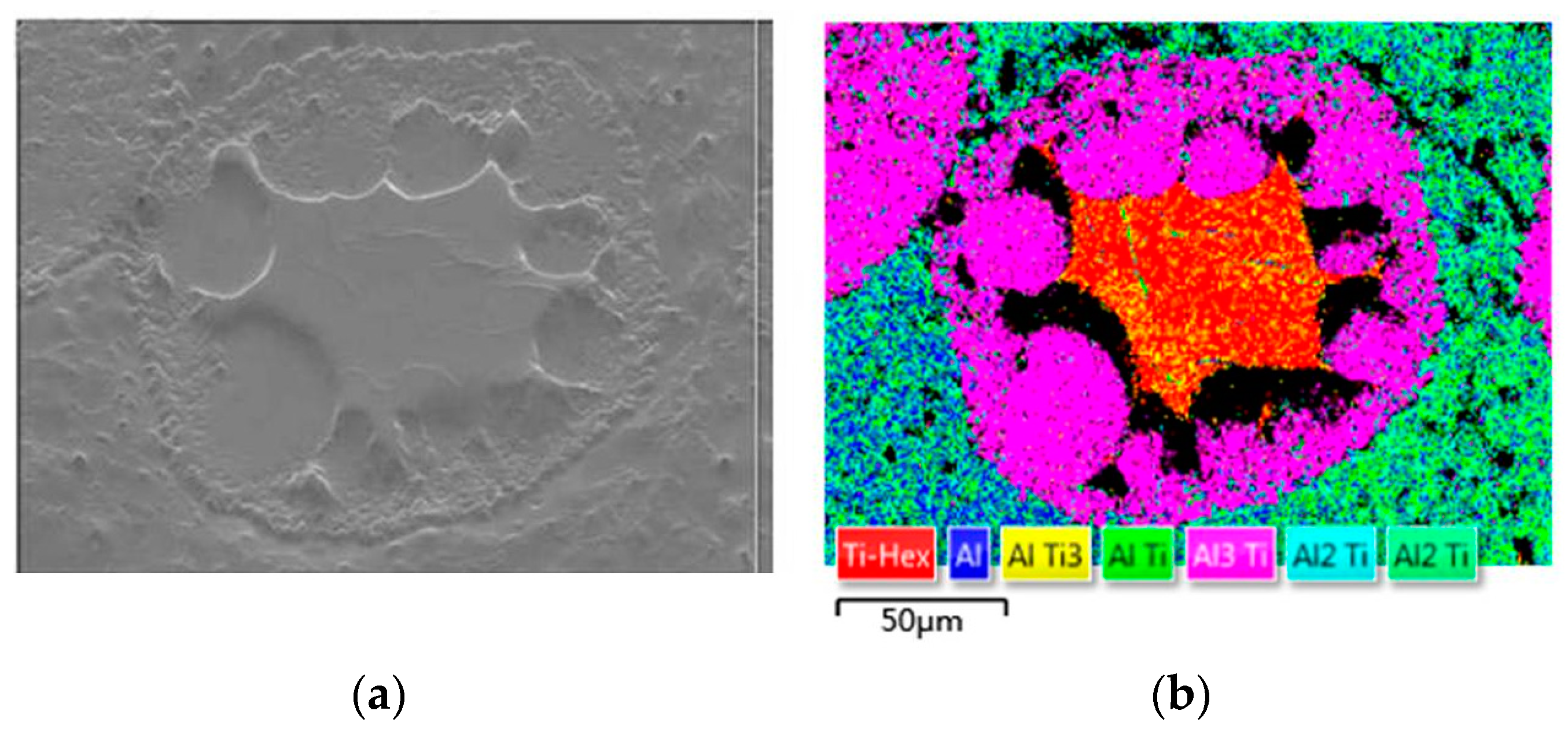

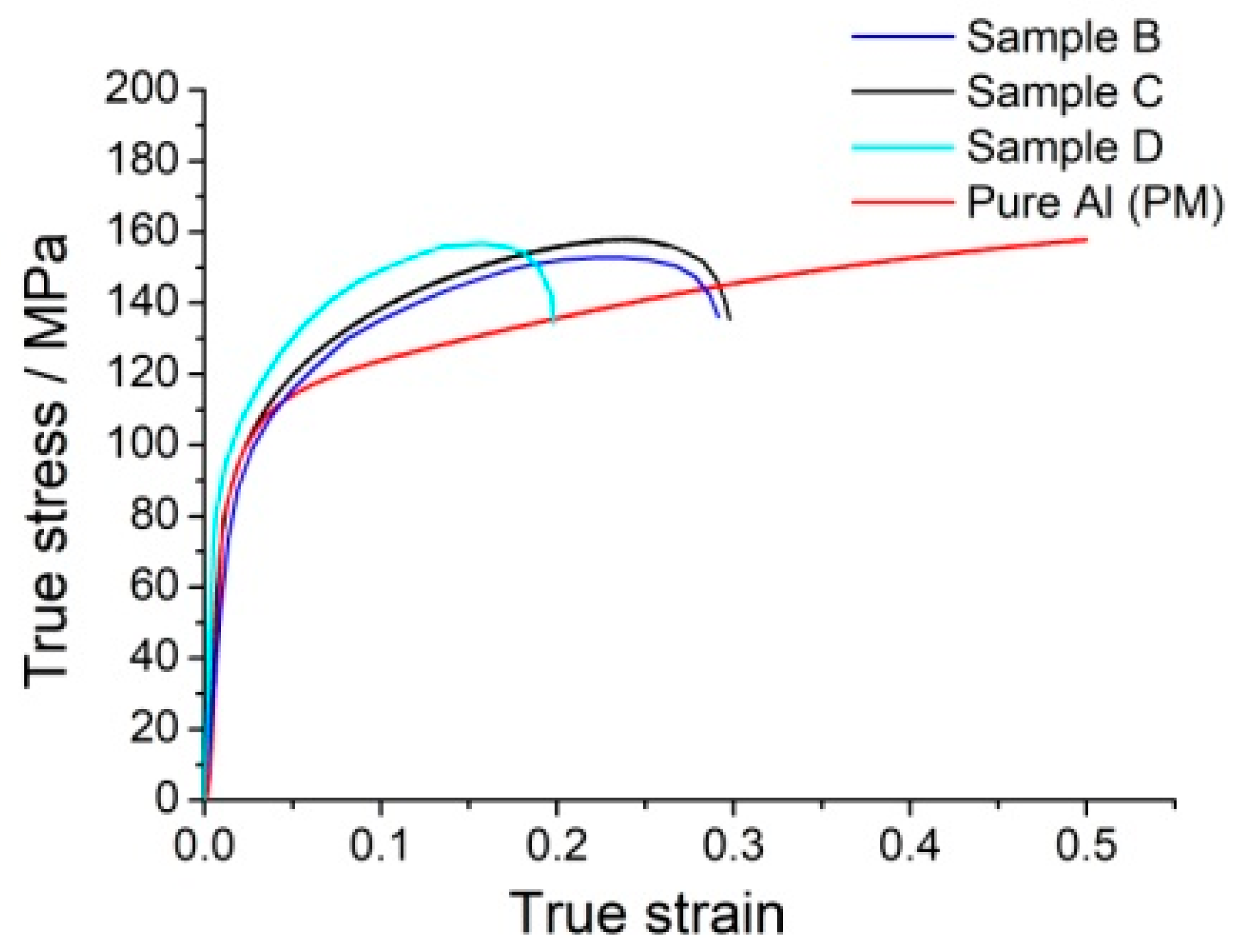
| Sample Mark | Mill Time (h) | Consolidation and Sintering Process | Holding Time in Sintering (h) |
|---|---|---|---|
| A | 3 | cold pressing | / |
| B | 3 | cold-pressing sintering | 1.0 |
| C | 8 | cold-pressing sintering | 1.0 |
| D | 3 | cold-pressing sintering | 1.5 |
| E | 8 | hot-pressing sintering | 1.0 |
| Specimens | Measured Value | Mean Value | ||||
|---|---|---|---|---|---|---|
| B | 2.514 | 2.435 | 2.623 | 2.605 | 2.464 | 2.528 |
| C | 2.543 | 2.456 | 2.598 | 2.615 | 2.514 | 2.545 |
| D | 2.561 | 2.486 | 2.551 | 2.611 | 2.538 | 2.549 |
| E | 2.373 | 2.366 | 2.382 | 2.410 | 2.392 | 2.384 |
| Specimens | Sintering Densification |
|---|---|
| B | 88.1% |
| C | 88.7% |
| D | 88.8% |
| E | 83.1% |
© 2019 by the authors. Licensee MDPI, Basel, Switzerland. This article is an open access article distributed under the terms and conditions of the Creative Commons Attribution (CC BY) license (http://creativecommons.org/licenses/by/4.0/).
Share and Cite
Wan, Q.; Li, F.; Wang, W.; Hou, J.; Cui, W.; Li, Y. Study on In-Situ Synthesis Process of Ti–Al Intermetallic Compound-Reinforced Al Matrix Composites. Materials 2019, 12, 1967. https://doi.org/10.3390/ma12121967
Wan Q, Li F, Wang W, Hou J, Cui W, Li Y. Study on In-Situ Synthesis Process of Ti–Al Intermetallic Compound-Reinforced Al Matrix Composites. Materials. 2019; 12(12):1967. https://doi.org/10.3390/ma12121967
Chicago/Turabian StyleWan, Qiong, Fuguo Li, Wenjing Wang, Junhua Hou, Wanyue Cui, and Yongsheng Li. 2019. "Study on In-Situ Synthesis Process of Ti–Al Intermetallic Compound-Reinforced Al Matrix Composites" Materials 12, no. 12: 1967. https://doi.org/10.3390/ma12121967





